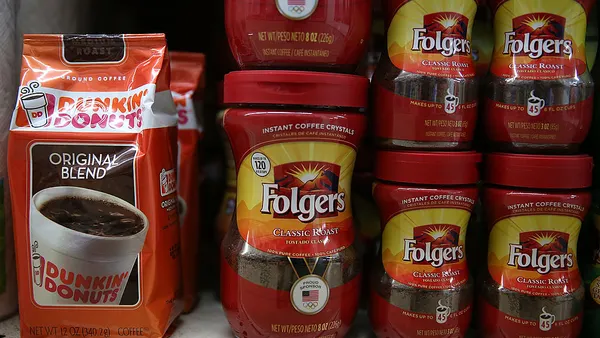Dive Brief:
- Boeing plans to temporarily stop production of the 737 Max next month as inventory piles up. The plane has been grounded since March after two crashes, one in 2018 and one in 2019, killed 346 people.
- Boeing cut production levels for the aircraft in April from 52 per month to 42 per month. Still, due to the groundings, more than 400 planes have accumulated in storage. Airlines will be able to return the 737 Max to service after the Federal Aviation Administration determines it is safe.
- Many of the companies involved in Boeing's supply chain saw their stock price tumble with the announcement that Boeing will halt production of the 737 Max.
Dive Insight:
Boeing has a massive, global supply chain, which means hundreds of suppliers will likely be affected by the production halt.
General Electric, which makes the 737 Max engines, could see a $2 billion hit to quarterly earnings as a result of the production pause but said it was working to "mitigate the impact," according to The Wall Street Journal.
Boeing's largest supplier, Sprit AeroSystem, extended its winter break in an attempt to slow production. It is currently storing 90 737 Max fuselages at its Wichita, Kansas, manufacturing facility, which is more than the company expected, according to the Wichita Business Journal.
The Boeing 737 Max is roughly 120 feet in length (depending on the model) with a 117-foot wingspan. Finding a place to store the finished products can be a challenge.
As of July, Planet, a private-sector satellite company, had identified three locations where stockpiles of 737 Max's were starting to appear.
| Location | Number of planes as of July 21 |
|---|---|
| Boeing Field in Renton, Washington | 60 |
| Moses Lake, Washington | 40 |
| Boeing’s San Antonio maintenance facility | 30 |
SOURCE: Planet
The financial impact for Boeing has already exceeded $7 billion, including $1.7 billion related to the production slowdown announced earlier this year, according to The New York Times.














